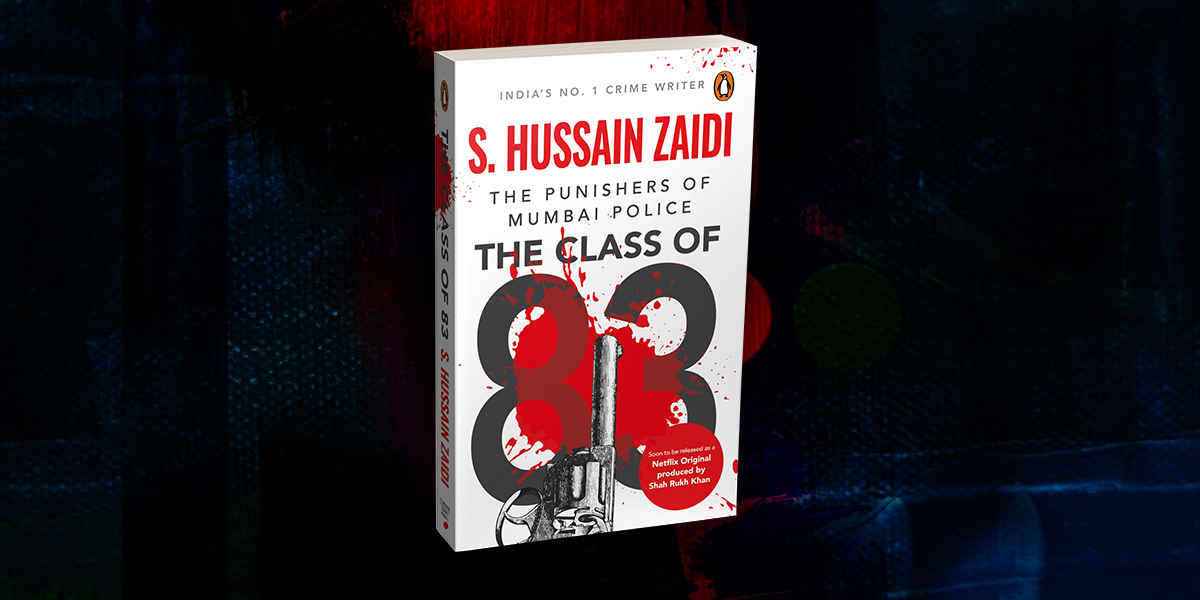At a time when Mumbai was plagued by underworld gangsters like Dawood Ibrahim, Iqbal Kaskar and Chhota Rajan, the batch of 1983 from the Police Training School (PTC) in Nashik-trained by the legendary Arvind Inamdar-produced a group of prominent encounter specialists who have been credited with bringing back the rule of law in the city.
Famed even within this batch, trigger-happy senior police inspector Pradeep Sharma understood that to save the city from the clutches of the underworld, he would need to dilute rival gangs. The Class of 83 delves deep into the most famous (or infamous) encounters conducted by Sharma and his batch mates. Pradeep Sharma was arrested by the same department he had served for two-and-a-half decades. He faced the ignominy of jail, clubbed in the same cell as the criminals he had arrested. However, he fought for his honour, was acquitted and reinstated into service.
Here is an excerpt from this one-of-a-kind story of a policeman’s triumphs, struggles and redemption-
‘I will get you this man, sir,’ Sharma said, even though he was not sure how he was going to do so.
‘Shabaash,’ Karkare said. ‘Keep it confidential, Pradeep. This is a matter of national security.’
Initially, Sharma’s search for Abdul Latif led him to many dead ends. The phone number turned out to be a prepaid number which had been issued without proper scrutiny of the address. These were early days for the mobile service providers in India. Document verification was not stringent. Sharma tapped his entire network of informants but gave them only the details they needed to know without revealing the context.
Sharma’s hunch was that Latif was in a Muslim dominated locality near a mosque. The possibilities of this theory were endless. In fact, every Muslim dominated locality would have a mosque nearby, similar to other religions and their places of worship. Yet, Sharma made one of his most trusted informers, Saleem, speak with many imams of mosques in the suburbs to find out if any suspicious person had turned up for offering namaz at their mosque recently. Saleem also got in touch with several real estate agents to see if any untoward person had rented out a flat in their locality. But unfortunately, no leads emerged from these efforts.
In 1998, Mumbai Police had come across a bizarre case of a bleeding man walking out of a toilet of a masjid in south Mumbai. It turned out that the man was trying to assemble explosives in the toilet, and it had detonated accidentally and injured him. The bleeding man abruptly left his device in the toilet and escaped on foot, while his white clothes were drenched with blood and he was bleeding all over his face and neck. Then Police commissioner R.H. Mendonca and Crime Chief R.S. Sharma had stepped into a Mumbai masjid for the first time to inspect the spot. However, the crime branch eventually found out that it was a Pakistani who had been staying in a Muslim locality in Nirmal Nagar in Santacruz for six months with a different name.
Sharma presumed that people who visited mosques frequently would notice a stranger and they would share this information with the police. But this time Sharma drew a blank. The only fall-back option now was the mobile number Karkare had given him. Back then there weren’t any sophisticated cellphone tapping capabilities, but Sharma had managed to procure a crude telephone tapping equipment from his sources in the department and set it up in the CIU office at Andheri. Over a listening period of two days, Sharma had figured out that Latif was in an area which had a mosque nearby because the azaan of morning prayer which could be heard distinctly in the background. The area also had a cowshed nearby because the mooing of cows and buffaloes was loud and clear. Sharma called a team of constables into his cabin.
‘How many mosques in Mumbai have a cowshed nearby?’ he asked.
His men were stunned by the question. They were unsure if Sharma was testing their knowledge as many Mumbaikars take immense pride in knowing trivial details about the city like the routes of the BEST buses, the famous delicacies of each area, renowned roadside shops located in the many by-lanes of Mumbai. The constables merely smiled and stared back at Sharma.
‘No one is allowed to go back home until I have this information,’ Sharma said, looking serious.
The constables rushed out of his room. In a few hours, they reported back to Sharma. There were five possible areas matching his description: Cheetah Camp in Mankhurd, Kurla Pipe Road, Amrut Nagar in Mumbra, Thane, and places in Jogeshwari and Goregaon.
Sharma had been continually discussing the case with Hemant Karkare, who was aghast to hear that the terrorists had bigger plans up their sleeves. Kandahar was being tracked by media across the globe. Already, India was being portrayed as a soft state which had been forced to the negotiating table by a rogue group of terrorists. Prime Minister Atal Bihari Vajpayee had climbed down from his aggressive posturing that the Indian government would not engage in any negotiations under the threat of the gun. Now, the government was seeking solace in the fact that the terrorists had apparently scaled down a lot of their demands. India’s image was being tarnished by the international media.
But the government was also concerned for the lives of the 190 civilians. The Indian national whom the hijackers had stabbed had bled to death. The innocent man was returning from his honeymoon trip with his newly wed wife. The pressure on the government was immense, and it was understandable that the lives of the citizens were being made a priority over other considerations. Indian agencies like RAW had also taken a severe beating that an incident like this had occurred in the first place. Meanwhile, Sharma briefed Karkare about the four locations he had zeroed in on. But launching a manhunt at these locations required sizeable manpower which could compromise the secrecy of Karkare’s mission.
‘We can’t take any more damage,’ Karkare told Sharma.
‘Sir, I am close to catching our man.’
‘Pradeep, only the result will count!’ Karkare said. ‘What is your next plan of action?’
‘I’m tapping my resources in the telecom operator to get a tower location on Latif’s number.’
‘Time is against us,’ Karkare replied. ‘Arrest Latif at all costs and soon.’
Hussain Zaidi takes us deep into the brutal world of the men in uniform who put their lives on the line to fight terror.
Read The Class of 83 to meet the men who made dreaded criminals fear death by encounter!









